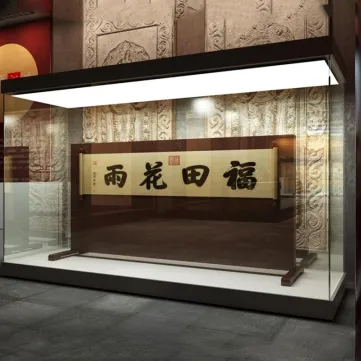Managing collections at a museum is a complex and vital task that requires careful planning, organization, and dedication. Collections are the heart of a museum, representing its unique identity, purpose, and cultural significance. Effectively managing collections ensures their preservation, accessibility, and educational value for both present and future generations. In this article, we will explore key strategies and best practices for managing collections at a museum.
Creating a comprehensive collection management policy is the foundation of effective collection management. This policy should outline the museum's mission, scope, and criteria for acquiring, documenting, conserving, and deaccessioning objects. It should also address ethical considerations, guidelines for handling sensitive or culturally significant items, and procedures for loans and acquisitions.
Carefully curating the museum's collection through acquisitions is essential. Acquiring new items should align with the collection management policy and add value to the museum's mission. Deaccessioning, the process of removing items from the collection, should be done judiciously and ethically. Items may be deaccessioned if they no longer fit the museum's focus, if they are duplicates, or if their condition is beyond repair.
Accurate and detailed cataloging is critical for efficient collection management. Each object should have a unique identifier and be described in the museum's database, including information about provenance, condition, dimensions, and historical context. Digital cataloging systems make it easier to organize and access information, improving overall collection management.
Preserving the integrity of collection items is paramount. Regular conservation assessments help identify items in need of conservation treatment to prevent further deterioration. Prioritize preventive conservation measures to control temperature, humidity, and light levels in storage areas. Consider climate-controlled storage for sensitive objects to protect them from environmental damage.
Proper storage and handling are essential to ensure the longevity of the collection. Invest in appropriate storage materials, such as acid-free archival boxes, folders, and protective coverings. Train staff in proper handling techniques, including the use of gloves and handling aids to minimize the risk of physical damage to the objects.
Digitization of the collection enhances accessibility, allowing researchers and the public to explore items online. This reduces the need for physical handling and enhances the reach of the museum's collection beyond its physical walls. Implement metadata standards to ensure consistency and interoperability in digital records.
Conduct regular inventory and documentation audits to ensure that the database accurately reflects the museum's holdings. These audits help identify any missing, mislabeled, or misplaced items and ensure that the collection is well-documented and accounted for.
Carefully manage loans and exhibitions to protect collection items while expanding the museum's reach. Loan agreements should include clear terms and conditions for the borrowing institution. For exhibitions, establish proper environmental controls and handling protocols to minimize risks during transit and display.
Implement robust security measures to safeguard the collection against theft, vandalism, or natural disasters. This includes surveillance systems, restricted access to storage areas, and a comprehensive disaster preparedness plan.
Low-oxygen(constant Humidity) And Clean Warehouse
Invest in the professional development of museum staff, particularly those involved in collection management. Training sessions and workshops on best practices, ethics, and conservation techniques ensure that the team is equipped to handle the museum's collection responsibly and effectively.
Engage the public with the collection through exhibitions, educational programs, and interpretive materials. Creating meaningful connections between visitors and the collection fosters appreciation, understanding, and support for the museum's mission.
Periodically evaluate the effectiveness of collection management strategies and policies. Solicit feedback from staff, visitors, and stakeholders to identify areas for improvement and make necessary adjustments to enhance the care and accessibility of the museum's collection.
Managing collections at a museum requires a well-rounded and dynamic approach. By adhering to a comprehensive collection management policy, implementing best practices in acquisitions, documentation, conservation, and accessibility, and fostering public engagement, museums can effectively preserve and showcase their unique and valuable collections. Properly managed collections not only contribute to the cultural and educational significance of the museum but also enrich the lives of visitors and researchers for generations to come.
 Museum Exhibit Display Cases
Museum Exhibit Display Cases
 Museum Table Display Cases
Museum Table Display Cases
 Museum Wall Display Case
Museum Wall Display Case
 Museum Drawer Cabinets
Museum Drawer Cabinets
 Low Oxygen Constant Humidity and Clean Warehouse
Low Oxygen Constant Humidity and Clean Warehouse
 Museum Collection Storage Warehouse
Museum Collection Storage Warehouse
 Low-oxygen(constant Humidity) And Clean Storage Cabinet
Low-oxygen(constant Humidity) And Clean Storage Cabinet
 Atmospheric-Pressure Low Oxygen Controlled Atmosphere Insecticidal Warehouse/ Cabinet
Atmospheric-Pressure Low Oxygen Controlled Atmosphere Insecticidal Warehouse/ Cabinet